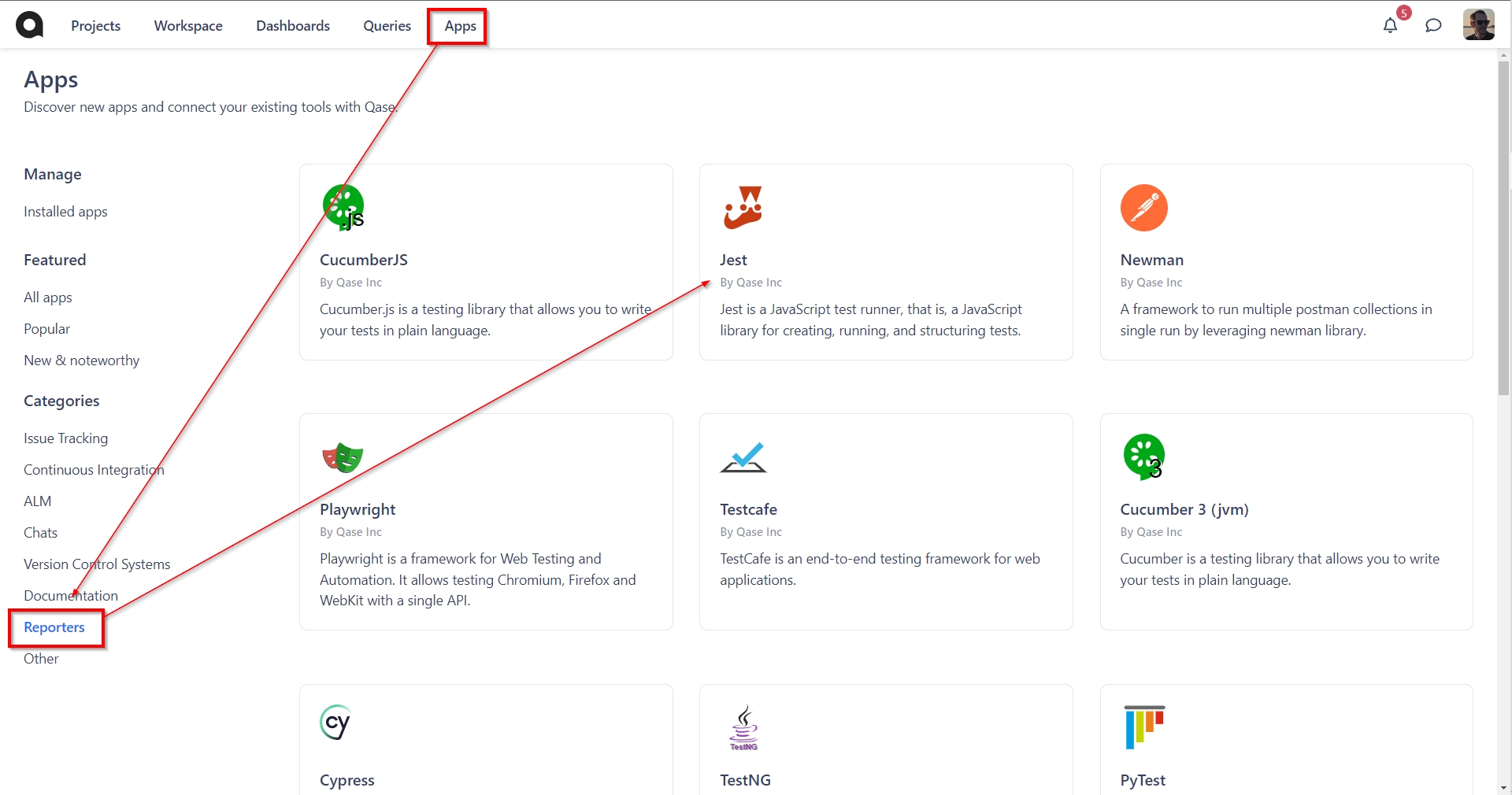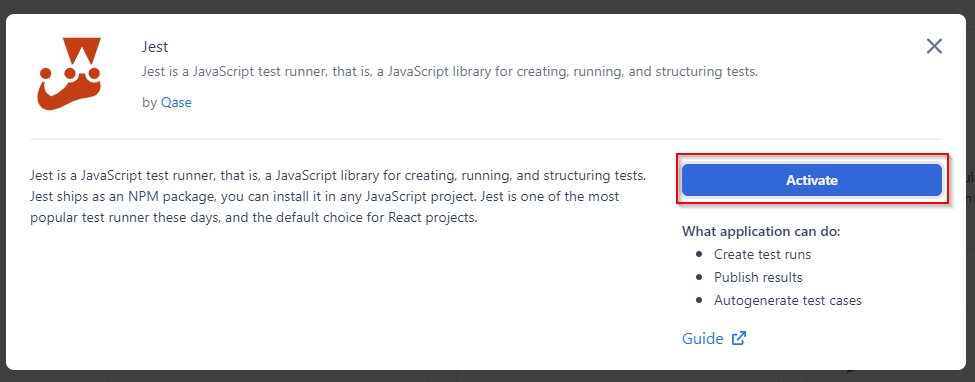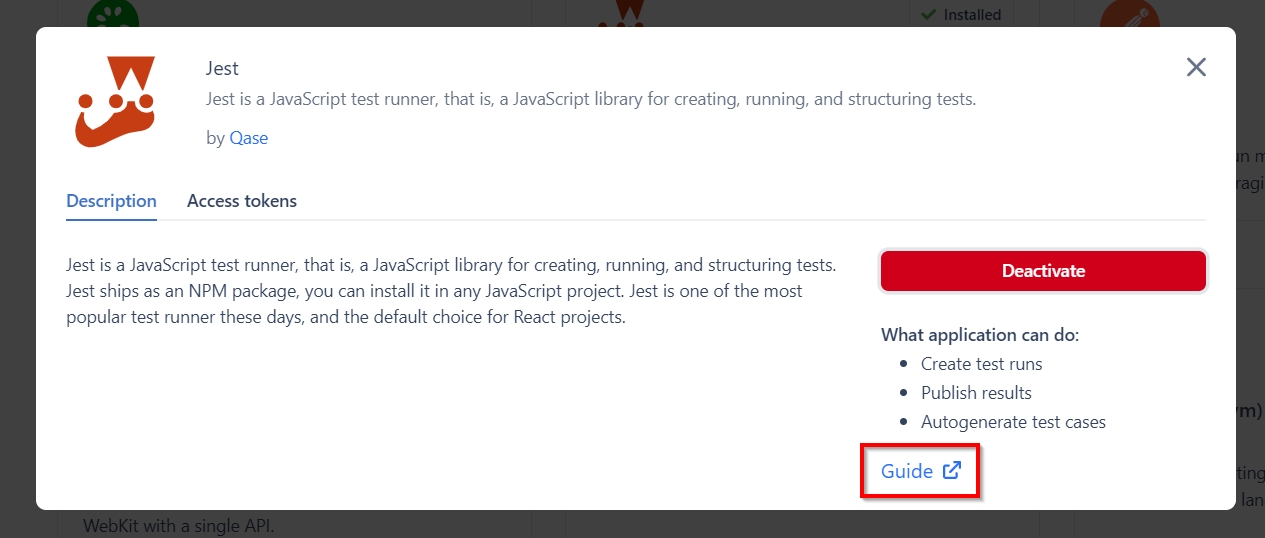Jest
What is Jest?
Jest is a JavaScript testing framework built on top of Jasmine and maintained by Meta. It was designed and built with a focus on simplicity and support for large web applications. It works with projects using Babel, TypeScript, Node.js, React, Angular, Vue.js and Svelte.
How to install Jest?
To pass the results of your Jest executions, you need to install the Jest app.
Navigate to the Apps page and switch to "Reporters" section, then click the "Jest" card:

Click "Activate":

Switch to "Access Tokens" and generate an API token that the Jest app will be using:
Click "Guide" to access the instruction on adding the Jest reporter to your automation flow:

Once the Jest app is installed, any test cases, test runs, and test results created and submitted will appear with the Jest as the author of said cases, runs or results (instead of a specific user whose API token has been used). Slack notifications will also appear with the Jest app as the author.
Last updated